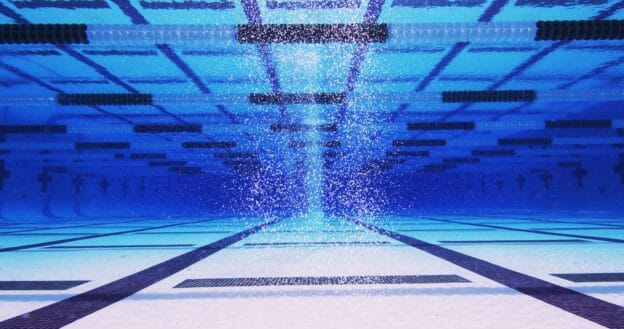Out of Our Element
Frontal drag is the number one enemy of the swimmer. Swimming is arguably the most technique sensitive sport on the planet. With water being some 800 times denser than air, the frontal drag forces that slow swimmers down come into play at much slower speeds than all other sports on land. For that reason, in order to become fast, we must learn how to reduce frontal drag as much as possible.
There are three types of frontal drag; friction, pressure (form) drag and surface (wave) drag. Researchers have shown that all three can contribute significantly to the slowing of a swimmer. In any given medium, including water, the frontal drag forces of an object are determined by its shape, its surface texture (friction) and its speed squared.
10 Good Ways to Reduce Frontal Drag:
- Keep the body aligned. A curved body creates more frontal drag than a straight body. While some curve in our body is needed in order to create more propulsion, such as during the hip undulation in the dolphin kick, it is important that we bend, but not break the body. Too much curve or too much angle of one of our appendages sticking out causes an enormous increase in frontal drag. Keeping the body aligned requires having a tight core.
- Keep the head down. Keeping the head down helps keep it in alignment with the body, but more importantly, a head down also can help reduce surface or wave drag. There is actually less drag underwater than on the surface of the water (think of a submarine), because we eliminate surface drag. Frontal drag is proportional to our speed squared, so ideally, we would like to see the head submerged during the fastest point in the stroke cycle, which I call the surge point. All four strokes have a surge point where the head should be underwater, even if it is slightly so.
- Pull underwater with a high elbow. In the pulling motion of all four strokes, the upper arm is the ‘bad cop’, causing most of the frontal drag. By keeping the elbow nearer to the surface (except it backstroke) and more in alignment with our body’s motion, we can reduce, but not eliminate, the frontal drag caused by the forward motion of the upper arm during the pull.
- Wear the fastest technology racing suit possible. The records set in 2008 and 2009 convinced all of us that the suits really matter. Even today, the best suits help reduce friction and keep the body tighter to reduce frontal drag.
- Shave all the hair from your body. Although this is generally not done (or recommended) until post puberty, when significantly more hair grows on the body, shaving the entire body will reduce friction and make us slicker and faster.
- Streamline off the start and all turns. Getting into the tightest streamline possible creates a huge advantage when you are moving fast. The fastest point you will reach in a swimming race (about 15 mph) is when the fingertips touch the water off the starting block. The second fastest is when your toes leave the wall on each turn (6-8 mph). At either time, because of the exponential relationship between speed and frontal drag, you had better get into the tightest streamline possible.
- Keep your kick tight. In freestyle, backstroke and breaststroke, the kick must be tight in order to help reduce frontal drag. With the former two, that means not bending the knees too much and in breaststroke it means keeping the knees at or inside the hips and elevating the feet and legs at the end of the kick.
- Double cap. Covering up that thick head of hair and creating a new surface for your head with the reduced friction of silicone is another good way to reduce drag. Most athletes today will double cap, leaving the goggle straps between the first and second caps. The outer cap should be a thicker silicone material to maintain its smoothness.
- Wear low profile goggles. Racing goggles should be strapped on tighter to the face and are a little smaller and sleeker than larger training goggles. The less they protrude from your face, the better.
- Point your toes. One of them most common mistakes made on the start is not pointing the toes at entry. Our Race Club study of passive drag showed that a relaxed (hanging) foot causes a 33% increase in frontal drag as compared to pointed toes. In general, the less splash one makes on the dive entry, the less frontal drag. The other common strokes where the relaxed foot causes more frontal drag is at the end of the breaststroke kick and the down kick in dolphin. In either case, keep the toes pointed backward to reduce drag.
Slip Through Water
If you successfully comply with all of the above, you will graduate from being a swimmer, one who slogs through the water, to become a much faster ‘swipper’, a swimmer that slips through the water. Let’s hope you become a ‘swipper’! (Click here to find out what a swipper is)
Yours in swimming,
Gary Sr.

